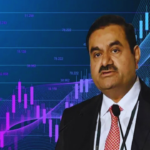Investing in mutual funds has gained significant traction among both seasoned and new investors. Among the various options, the Quant Business Cycle Fund stands out due to its unique investment approach that aligns portfolio decisions with market cycles.I will provide a delve into the details of the Quant Business Cycle Fund investment strategy, exploring how it operates and why it’s a compelling choice for investors. Investing in mutual funds has become a popular avenue for wealth creation, appealing to a wide range of investors with varying goals. Among the myriad of options available, the Quant Business Cycle Fund has emerged as a distinguished choice.
What sets this fund apart is its focus on aligning investment decisions with the prevailing phases of the business cycle. By strategically shifting its allocation between sectors and industries based on economic conditions, the fund aims to maximize returns while minimizing risks. This dynamic approach ensures that the portfolio remains adaptive to market changes, making it particularly attractive for those seeking a balanced yet growth-oriented investment. Whether you’re a seasoned investor or a novice, understanding how this strategy works is essential for making informed financial decisions.
What Is the Quant Business Cycle Fund?
The Quant Business Cycle Fund is a mutual fund that uses a dynamic investment approach to capitalize on different phases of the economic cycle. Economic cycles typically include four stages: expansion, peak, contraction, and trough. This fund identifies the current phase and adjusts its portfolio allocation to sectors and industries expected to perform well during that stage. For example, it may focus on cyclical stocks during expansion and shift to defensive sectors during contraction.
By leveraging economic data, market trends, and in-depth analysis, the fund aims to enhance returns while mitigating risks. Its proactive strategy helps investors navigate market volatility and seize opportunities tied to changing economic conditions. Suitable for those seeking a well-rounded, adaptive investment option, the Quant Business Cycle Fund offers a compelling avenue for long-term financial growth.
Key Features of the Quant Business Cycle Fund
| Feature | Details |
| Investment Objective | Long-term capital appreciation by leveraging economic cycles. |
| Portfolio Composition | Primarily equity, with a focus on cyclical and defensive sectors. |
| Risk Profile | Moderately high risk, suitable for long-term investors. |
| Fund Manager Expertise | Managed by professionals with expertise in economic cycle analysis. |
| Time Horizon | Best suited for an investment horizon of 5-7 years or longer. |
How Does the Business Cycle Strategy Work?
The business cycle strategy is an adaptive investment approach that aligns portfolio decisions with the phases of the economic cycle, aiming to optimize returns and manage risk. Here’s a detailed explanation of how it operates:
Economic Cycle Analysis: Fund managers examine key macroeconomic indicators like GDP growth, inflation, employment trends, and central bank policies. These factors help identify the current phase of the business cycle—expansion, peak, contraction, or trough. This analysis provides a foundation for strategic portfolio adjustments.
Sector Allocation: Based on the identified phase, investments are allocated to sectors poised to perform well under prevailing conditions. For instance, during expansion, sectors such as industrials, technology, and consumer discretionary often thrive. Conversely, in a contraction, the focus shifts to defensive sectors like utilities, healthcare, and consumer staples to preserve capital and reduce volatility.
Stock Selection: Within chosen sectors, the fund managers perform rigorous research to select individual stocks. High-quality companies with strong fundamentals, competitive advantages, and robust growth potential are prioritized to maximize returns.
Dynamic Adjustments: The strategy involves continuous monitoring of economic and market trends. Portfolio reallocations are made dynamically to ensure alignment with the evolving business cycle, allowing for agility in capturing growth opportunities or mitigating risks.
Advantages of the Quant Business Cycle Fund Strategy
The Quant Business Cycle Fund strategy offers a sophisticated approach to investing, leveraging economic insights and adaptive management. Here are the key advantages in detail:
Dynamic Allocation: A hallmark of this strategy is its ability to adjust portfolio allocations based on the prevailing economic phase. By actively shifting investments across sectors like industrials, healthcare, or technology depending on whether the economy is expanding or contracting, the fund remains well-positioned to capture opportunities and protect against downturns.
Risk Mitigation: The strategy’s focus on aligning investments with economic conditions helps minimize exposure to underperforming sectors during challenging times. For example, in a contraction phase, the fund may increase allocations to defensive sectors like utilities and consumer staples, offering stability in volatile markets.
Growth Potential: By capitalizing on sectors expected to outperform during specific economic phases, the strategy aims to maximize returns. During an expansion phase, for instance, it might target growth-oriented sectors such as technology or consumer discretionary, ensuring the fund rides the wave of market momentum
Performance Analysis
The success of the Quant Business Cycle Fund is evident in its historical performance. Here’s a summary of its returns:
| Year | Return (%) | Benchmark Return (%) |
| 2020 | 15.2 | 12.5 |
| 2021 | 18.6 | 16.1 |
| 2022 | 12.8 | 10.4 |
| 2023 (YTD) | 9.4 | 7.8 |
Who Should Invest in the Quant Business Cycle Fund?
The Quant Business Cycle Fund is designed for investors seeking a balanced approach to growth and risk management, making it an appealing choice for specific investor profiles:
Long-Term Vision: This fund is ideal for individuals who can commit to staying invested for 5-7 years or more. The strategy’s reliance on aligning with business cycles means its full potential is realized over extended periods, making it suitable for those with long-term financial goals such as retirement planning or wealth accumulation.
Moderate Risk Appetite: Investors comfortable with short-term fluctuations in exchange for potential long-term gains will find this fund appealing. While the dynamic allocation mitigates risks, it requires tolerance for periodic market volatility inherent in cyclical investments.
Interest in Active Management: Those who value a hands-on, professionally managed portfolio will appreciate the fund’s proactive adjustments based on economic trends. This approach suits investors who prefer their investments to be actively monitored and realigned with market conditions.
Factors to Consider Before Investing
Before committing to the Quant Business Cycle Fund, potential investors should evaluate these critical aspects:
Expense Ratio: Active management involves costs, so it’s essential to assess whether the fund’s fees are justified by its performance history and strategy. A competitive expense ratio can make a significant difference in long-term returns.
Market Conditions: Understanding the current phase of the economic cycle is crucial. For example, entering the fund during a contraction phase might align with defensive strategies, whereas an expansion phase could enhance growth opportunities.
Diversification Needs: Consider how this fund complements your existing portfolio. If your investments are already heavily weighted in specific sectors, ensure the fund adds diversity rather than increasing exposure to the same areas.
Comparing Quant Business Cycle Fund with Other Funds
| Feature | Quant Business Cycle Fund | Traditional Equity Funds |
| Investment Approach | Dynamic, based on economic cycles | Fixed sector allocation |
| Risk Profile | Moderately high | Moderate to high |
| Return Potential | High during favorable economic phases | Varies based on market conditions |
| Management Style | Actively managed | Can be active or passive |
How to Invest in the Quant Business Cycle Fund
Investing in the Quant Business Cycle Fund is a straightforward process that involves a few key steps.This comprehensive guide will help you get started:
Research and Understand the Fund: Begin by gathering information about the fund’s objectives, investment strategy, historical performance, and expense ratio. Understanding how the fund aligns with your financial goals and risk appetite is essential before investing.
Choose an investment platform: Decide whether to invest directly through the fund house or via third-party platforms such as online brokerages, mutual fund distributors, or financial advisors. Ensure the platform offers a user-friendly interface and reliable customer support.
Complete KYC (Know Your Customer) Requirements: If you’re a first-time mutual fund investor, complete the mandatory KYC process. Submit documents such as proof of identity, address, and a recent photograph through online or offline methods.
Select the investment mode: Choose between a lump-sum investment or a systematic investment plan (SIP). A lump sum requires a one-time investment, while SIP allows you to invest smaller amounts periodically, promoting disciplined investing.
Determine Your Investment Amount: Decide on the amount you wish to invest based on your financial goals, risk tolerance, and budget. SIPs often have lower minimum investment requirements, making them accessible to a wider range of investors.
Wrapping up
The Quant Business Cycle Fund offers a robust investment strategy for those seeking to align their portfolios with market trends. By leveraging insights from economic cycles, the fund maximizes growth opportunities while minimizing risks. Whether you’re a seasoned investor or a newcomer with a long-term vision, this fund can be a valuable addition to your investment portfolio. Ensure you understand the fund’s dynamics and consult with a financial advisor before investing.The Quant Business Cycle Fund exemplifies innovation in mutual fund investment strategies. Its ability to anticipate and respond to the ebbs and flows of economic cycles provides investors with a unique advantage.
By leveraging data-driven insights and an adaptive allocation model, the fund aims to deliver consistent performance across varying market conditions. For those seeking a long-term investment vehicle that offers both stability and growth potential, this fund stands as a compelling option. Ultimately, the Quant Business Cycle Fund represents a forward-thinking approach to mutual fund investing, catering to the evolving needs of today’s market-savvy investors.
FAQs
What makes the Quant Business Cycle Fund unique?
The Quant Business Cycle Fund differentiates itself with its unique approach of aligning investments with the phases of the business cycle. By actively adjusting the portfolio according to the economic environment, the fund seeks to capitalize on sectors that are expected to perform well in each cycle. This dynamic investment strategy allows the fund to enhance returns during growth phases while managing risks during downturns, providing a robust and adaptable solution for investors. With this strategy, the fund can adjust to market fluctuations, offering a higher level of flexibility compared to traditional investment funds.
Is the Quant Business Cycle Fund suitable for new investors?
While the fund is tailored for investors who have some experience in the market, it can also be suitable for new investors who are willing to adopt a long-term investment strategy and have a moderate risk tolerance. The fund’s dynamic and professionally managed approach allows for gradual learning as it adjusts according to the current phase of the business cycle. New investors should have the ability to stay invested over a period of 5-7 years or longer, as this strategy thrives in the long term, enabling growth opportunities during each market cycle.
How frequently does the fund rebalance its portfolio?
The frequency of portfolio rebalancing in the Quant Business Cycle Fund is driven by changes in macroeconomic conditions and the evolving business cycle. The fund managers continuously monitor economic indicators such as GDP growth, inflation, and interest rates to assess the economic phase and adjust sector allocations accordingly. While the fund doesn’t rebalance on a fixed schedule, it makes adjustments as necessary to optimize returns during different phases of the business cycle, such as during expansions or recessions, ensuring that the portfolio remains aligned with the prevailing economic trends.
What sectors does the fund prioritize in an expansion phase?
During an economic expansion phase, the Quant Business Cycle Fund typically prioritizes sectors that tend to benefit from increased consumer demand and economic growth. Sectors such as technology, industrials, and consumer discretionary are often favored, as these industries tend to perform well when the economy is growing. The fund focuses on companies within these sectors that have strong growth potential, aiming to capture higher returns. By shifting the portfolio toward these growth-oriented sectors, the fund maximizes its chances of achieving strong performance in an expansionary phase of the cycle.
How does the Quant Business Cycle Fund manage risks during downturns?
In response to economic downturns, the Quant Business Cycle Fund adopts a defensive strategy by reallocating investments to more stable sectors. Sectors such as healthcare, utilities, and consumer staples, which are less affected by economic slowdowns, are emphasized. These industries tend to provide consistent returns during recessions or market downturns due to the essential nature of their products and services. By focusing on these defensive sectors, the fund aims to preserve capital and minimize losses, protecting investors from significant declines in challenging market conditions.
Who should consider investing in the Quant Business Cycle Fund?
The Quant Business Cycle Fund is ideal for investors who have a moderate risk appetite and are looking for long-term growth. It’s particularly suited for those who are comfortable with market fluctuations and have a financial horizon of 5-7 years or longer. Investors who prefer actively managed funds that respond to economic cycles will find this fund attractive. Additionally, it is suitable for those seeking to optimize returns through strategic sector allocations and an investment approach that is adjusted according to the evolving business cycle, making it a great option for those looking to balance risk with growth.
What are the key factors to consider before investing in this fund?
Before investing in the Quant Business Cycle Fund, investors should consider several important factors. The fund’s expense ratio should be evaluated to ensure that its costs align with the potential returns. Additionally, investors should assess the current economic phase and understand how it could impact the fund’s performance. Diversification needs are also crucial; ensure that the Quant Business Cycle Fund fits within your overall investment strategy without overexposing you to any specific sector or asset class. Finally, evaluate your financial goals and risk tolerance to determine whether this fund is an appropriate choice for your portfolio.










